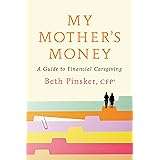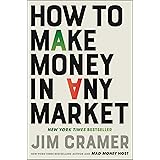The distinction between an $800 and an $8,000 gold chain, as highlighted in the accompanying video, fundamentally hinges on far more than just surface appearance or minor karatage differences. While both may gleam with the allure of precious metal, their intrinsic value, durability, and long-term investment potential diverge dramatically due to their construction. Understanding this critical difference is paramount for any discerning buyer navigating the intricate world of fine jewelry, seeking both aesthetic appeal and lasting worth. This detailed analysis delves into the underlying metallurgical realities and market implications that differentiate a temporary ornament from a cherished heirloom.
Deconstructing the Difference: Solid Gold Chains Versus Hollow Gold Chains
Firstly, the most significant factor separating the two gold chains presented is their internal structure: one is hollow, and the other is solid. The $800 chain, weighing only 24.5 grams, exemplifies a hollow construction, where the gold is formed into thin sheets or tubes that are then linked together. In stark contrast, the $8,000 chain, tipping the scales at 128.3 grams, is crafted from a continuous, dense mass of 14-karat gold. This substantial weight difference is not merely a matter of quantity but a direct indicator of the volume of precious metal involved in each piece. A hollow chain, much like a chocolate bunny, offers the shape and outward appearance of its solid counterpart but lacks the fundamental substance within. Such construction drastically reduces the amount of gold required, translating directly into a lower production cost and subsequently a more accessible price point for consumers.
Secondly, the physical attributes of these differing constructions manifest in noticeable ways, particularly during daily wear. A hollow gold chain often produces a distinctive “jingle” or rattling sound as its lightweight links collide, a tell-tale sign that signifies its lack of internal mass. This acoustic signature is akin to shaking an empty box; the sound immediately betrays the absence of solid material. Conversely, a solid gold chain feels substantial and dense in the hand, its weight providing a sense of gravitas and quality that a hollow chain simply cannot replicate. This tactile difference is a crucial, often overlooked, aspect of luxury and craftsmanship that connoisseurs instinctively recognize and value in their choice of gold chain.
Decoding Karatage: Purity is Not the Only Pillar of Value
Understanding gold purity, or karatage, is undeniably important in assessing a gold chain’s value, but it is rarely the sole determinant. The video notes the $800 chain as 10-karat gold and the $8,000 chain as 14-karat, indicating a slight difference in their gold content. Karatage refers to the proportion of pure gold in an alloy, with 24-karat being 100% pure gold. Thus, 10-karat gold contains 41.7% pure gold, while 14-karat gold contains 58.3% pure gold, with the remainder composed of various alloying metals like copper, silver, or zinc. These alloys are added to enhance durability, alter color, and improve workability, as pure gold is exceptionally soft and malleable.
While a higher karatage generally means a higher concentration of gold and thus greater intrinsic value per gram, this factor becomes secondary when evaluating overall worth in the context of hollow versus solid construction. For instance, a small, solid 10-karat gold chain can easily outweigh and possess more total gold content than a significantly larger, hollow 14-karat gold chain. The alloying metals primarily influence the gold’s hardness and resistance to wear, making 14-karat a popular choice for jewelry due to its balance of purity and strength. However, even a robust 14-karat alloy cannot overcome the inherent structural vulnerabilities of a hollow design, positioning construction as a more critical aspect than slight purity variations.
The Durability Dilemma: Why Hollow Chains Invite Catastrophe
The Achilles’ heel of any hollow gold chain lies squarely in its profound lack of durability and inherent structural weakness. Crafted from a minimal amount of gold, these chains are acutely susceptible to denting, bending, and ultimately breaking under even routine daily activities. Imagine the delicate shell of an egg compared to the resilient strength of a pebble; both occupy space, but their ability to withstand external forces is vastly different. A solid gold chain, by contrast, boasts a formidable resistance to such physical stresses, its dense construction providing a robust armor against the knocks and impacts of everyday life. This intrinsic strength ensures that a solid piece maintains its structural integrity and aesthetic appeal for decades.
Furthermore, the devastating impact of damage to a hollow chain often proves irreversible, rendering it economically unfixable. Once a hollow link is severely dented or fractured, the thin gold material cannot typically be re-shaped or welded back to its original form without visible compromise or further weakening. Attempting repairs usually results in an unsightly patch or a continued point of failure, meaning the initial cost savings evaporate into a total loss. This stark reality contrasts sharply with solid gold chains, which possess enough material volume to undergo professional repairs, polishing, and restoration, effectively allowing them to endure through generations. The upfront saving on a hollow chain often becomes an exorbitant long-term expense.
Investment in Precious Metals: The Solid Gold Chain Advantage
Investing in fine jewelry, particularly gold, is a nuanced decision that extends beyond mere aesthetics, encompassing considerations of tangible asset value. A solid gold chain functions far more like a tangible asset than its hollow counterpart, retaining a substantial portion of its melt value due to the sheer volume of gold it contains. The $8,000 solid 14-karat gold chain, weighing 128.3 grams, holds a considerable quantity of precious metal, making it a viable store of wealth, much like a diversified stock portfolio. Its value is intimately tied to the fluctuating global gold prices, offering a hedge against economic uncertainties and currency devaluation. This intrinsic value ensures that, even if market sentiment shifts, the underlying commodity retains significant worth, unlike assets that derive value purely from speculation or fleeting trends.
Conversely, a hollow gold chain offers minimal investment potential, primarily because its low gold content severely limits its melt value. The production cost of such a chain is heavily weighted by labor and design, with the actual gold representing a disproportionately small percentage of the retail price. Consequently, should you ever need to sell a hollow chain, its resale value will plummet, often fetching little more than scrap metal prices for its paltry gold content. This makes it more akin to a consumable fashion accessory than a durable financial instrument. For those seeking to combine the elegance of jewelry with the strategic wisdom of precious metal ownership, a solid gold chain represents a far more prudent and financially astute choice, embodying both beauty and enduring economic substance.











